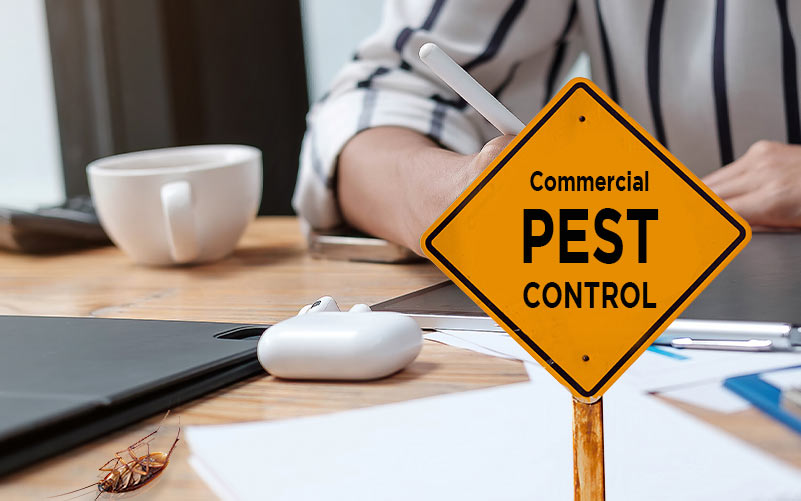A1 Bed Bug Exterminator Charlotte - Effective and Economical Services
A1 Bed Bug Exterminator Charlotte - Effective and Economical Services
Blog Article
Bed Insect Therapy Breakdown: Contrasting Chemical Vs. Non-Chemical Solutions
In the world of insect control, particularly when managing the consistent concern of bed bugs, the option in between chemical and non-chemical therapy services can be an essential one. Both approaches provide unique benefits and drawbacks, affecting factors such as performance, safety factors to consider, and overall price. By analyzing the nuanced details of each method, a clearer understanding of which course to seek in addressing a bed bug invasion can be obtained.
Performance of Chemical Therapies
Chemical treatments for bed bug invasions have actually been widely identified for their potent and rapid effectiveness in getting rid of these pests. When considering the efficiency of chemical treatments, it is vital to recognize that they can supply a comprehensive and quick service to a bed insect issue. Expert pest control operators often count on insecticides to target bed bugs at various phases of their life process, consisting of adults, eggs, and nymphs. These chemicals generally work by interrupting the bed insects' nerve system, resulting in paralysis and eventual death.
Additionally, chemical therapies have the advantage of offering recurring impacts, meaning that they can remain to get rid of bed bugs also after the preliminary application. This residual activity is particularly beneficial in combating any type of prospective re-infestations. In addition, the fast action of chemical therapies can bring relief to people facing extreme bed bug problems, allowing them to reclaim control of their space promptly.
Safety Interest In Chemical Solutions
When using chemical solutions for bed bug treatment is ensuring the security of passengers and the setting,One essential facet that calls for cautious factor to consider. While chemical therapies can be effective in removing bed pests, they might posture risks if not taken care of correctly. One of the key safety and security interest in chemical services is the possible injury they can create to human wellness. Exposure to particular chemicals made use of in bed pest therapies can cause breathing concerns, skin irritability, or other adverse reactions, specifically in individuals with pre-existing conditions or sensitivities. Furthermore, incorrect application or dosage of chemical pesticides can lead to hazardous residues remaining in the treated area, presenting long-lasting health and wellness dangers to passengers.
Moreover, the ecological influence of chemical options is one more significant consideration. Some pesticides made use of in bed insect therapies might be dangerous to useful insects, wildlife, and ecological communities if they seep right into the soil or water systems. It is necessary to make use of chemical therapies carefully, complying with safety and security guidelines, and considering much less harmful alternatives to minimize these dangers and ensure the effective and safe useful source administration of bed pest infestations.
Benefits of Non-Chemical Techniques
Thinking about the prospective safety and security worries and environmental impact related to chemical remedies for bed insect therapy, checking out non-chemical approaches provides a promising option with several unique benefits. Non-chemical approaches offer a more secure option for houses, particularly those with people, pets, or kids delicate to harsh chemicals. These techniques eliminate the dangers of direct exposure to toxic compounds, lowering the potential for unfavorable wellness results. Additionally, non-chemical therapies are eco friendly, as they do not add to air or water pollution, making them a sustainable option for insect control.
In addition, non-chemical options can be efficient in targeting bed bugs, consisting of hard-to-reach locations where chemical treatments may not pass through - A1 bed bug treatment in charlotte. Methods such as warmth therapy, vacuuming, steam cleaning, and cushion coverings provide detailed elimination without the usage of harmful chemicals.
Limitations of Non-Chemical Treatments

In addition, non-chemical therapies usually require numerous applications to accomplish successful eradication. This can be taxing and may not always guarantee complete elimination of all bed insects and their eggs, particularly in hard-to-reach or hidden places.
Furthermore, the success of non-chemical therapies heavily depends on appropriate execution and thoroughness, which can be challenging for people without expert expertise. Insufficient application of non-chemical approaches might lead to insufficient obliteration, resulting in consistent problems and the demand for extra treatments.
Therefore, while non-chemical therapies have their advantages, it is vital to recognize these restrictions and consider them when determining one of the most efficient technique for taking care of bed bug problems.
Expense Contrast: Chemical Vs. Non-Chemical Options
Provided the constraints linked with non-chemical treatments, a vital element pest control phoenix to evaluate in the context of bed insect monitoring is the price contrast in between chemical and non-chemical alternatives. In comparison, non-chemical treatments like warmth treatment or vapor can be more pricey, with costs ranging from $1,000 to $6,000 for an entire home. While the first price of chemical therapies may appear reduced, multiple therapies might be needed to completely remove the infestation, potentially raising the total cost.
Final Thought

Thinking about the potential safety problems and environmental effect connected with chemical solutions for bed pest therapy, discovering non-chemical techniques presents an appealing alternative with numerous distinct benefits.Offered the restrictions connected with non-chemical therapies, an important aspect to review in the context of bed bug management is the price contrast in between chemical and non-chemical options. In comparison, non-chemical therapies like warmth treatment or steam can be more expensive, with expenses varying from $1,000 to $6,000 for a whole home. While the preliminary price of chemical treatments might seem reduced, numerous therapies might be called for to completely get rid of the problem, possibly boosting the total price.In conclusion, when comparing chemical and non-chemical bed insect therapy alternatives, it is crucial to take into consideration effectiveness, safety and security, benefits, restrictions, and price.
Report this page